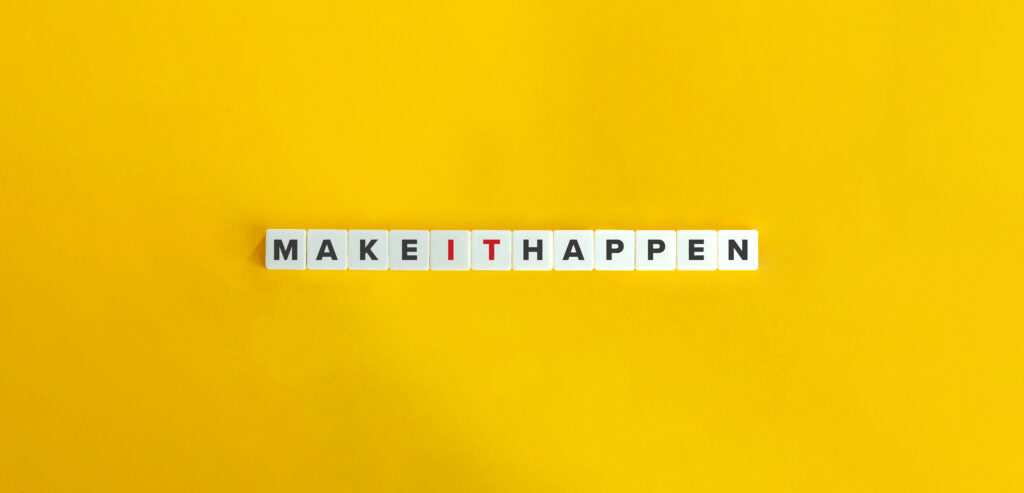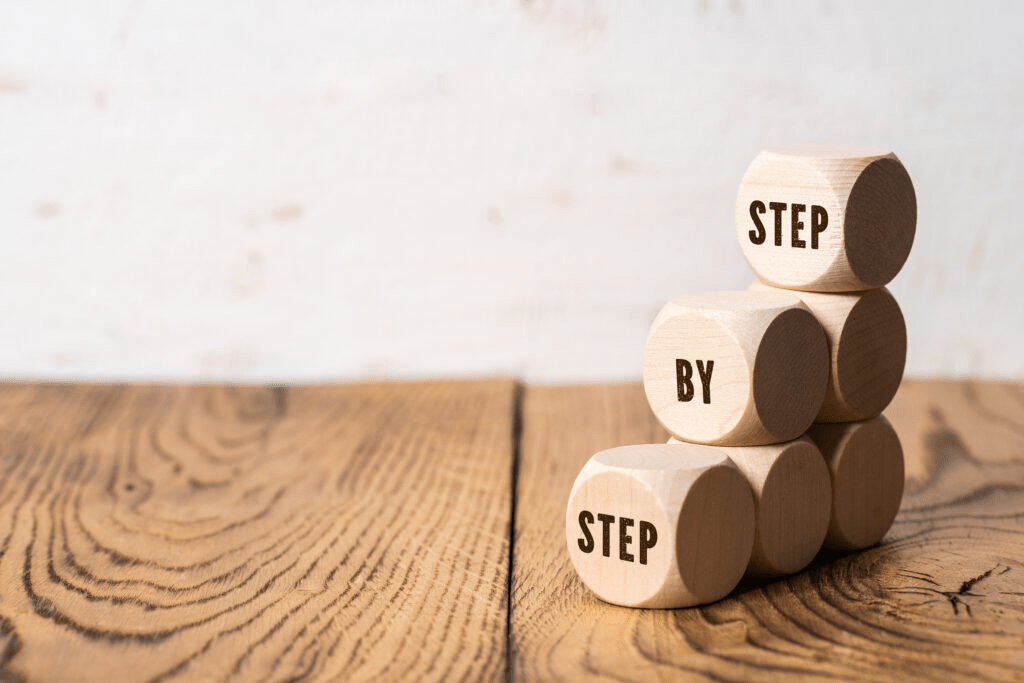
Jun 21, 2023
I can see clearly now.
As stated previously, ideas in action rarely stay the same. They take shape. They evolve. We tweak them into being. And as the idea becomes a daily thing, something very interesting happens. We begin to see that it’s not only do-able, it begins to solidify as part of a routine. That’s what cementing habit means – becoming so fully en-grained, we cannot NOT do whatever it is. It’s transformed from a thing we have to do to a thing we get to do because it’s who we are.

Habits take time.
Think of something you do now; that at one time seemed unachievable or difficult to get going. Sobriety for me was that thing. I never, ever thought I would get past the pain and insanity that was drinking alcohol. I mean it was a daily reality. Drinking had moved from enjoyment, to a crutch, and then into an insatiable, physiological nightmare. I had to drink to drink. It sucked.
The pivot point for me was being sick and tired of being sick and tired. I had reached my point of desperation. Then, I started a program. 12-steps. A sponsor. Meetings every day…sometimes twice a day. Hearing from others what sobriety can look like. In those meetings, I realized, I wasn’t so isolated. That I wasn’t the only one who struggled with this addiction. Hearing their stories made what I was going through real and I had found a herd to be part of. Then came the work. Each day. Each hour actually, of consciously committing myself to not take a drink. And in time, I stopped. And it’s been 9 years.
I’m still an addict. I am now choosing to lead a life without alcohol. The habit stuck, and I have to work at it every day. I will always remember my sponsor saying at my beginning, “You’re probably not going to get this by Thursday.” He was giving me grace, and letting me know, this will take some time.

Habits require daily investment.
What does it take for something to matter more than the effort we put forth? I found two things as incredibly important catalysts for my transformation. One has to do with wanting my desired vision more than the effort I need to engage every day. I have to want it so much, the pain of change, or time commitment, or degree to which I dive in, that no matter what, I will do it. It’s the whole ‘how bad’ do I want this to be part of what I do every day.
The second is seemingly small, although, I have found it monumentally huge. I have to identify with what I am trying to achieve as part of who I am. Call it complete ownership. Rather than saying “I will no longer drink”, I had to pivot into identifying as someone who does not drink. I manifested it into my very being. “I am a person who no longer drinks alcohol, and decide today, by the grace of God, to be a sober person.”
Then there are the process elements of making it a habit, like scheduling it – actually writing it down. Sticking with it – especially when there are forces that would take you off point. Monitoring it – making note, journaling, and even some form of measurement to gauge time and effectiveness. Fine-tuning it – by making an intentional assessment of the behaviors that keep you focused. Feeding it – which is investing in it and keeping it top of mind every single day, and never letting it just stay idle. And celebrating it – every time you do it, make it a moment of congratulations, gratitude and fulfillment.

When Will You Know?
I remember being asked by a store leader, “When will I know when it’s a habit?” You’ll know when you stop thinking about it being part of your routine. It just becomes what you do…without prompting, reservation, limit, or fail.
If you have a crazy day, it doesn’t change. Or if your environment is different than normal, it doesn’t change. If you feel under the weather, it doesn’t change. If you crush your targets, it doesn’t change. If everything you are working on is upside down and sideways, it doesn’t change. When the urge to not do it is at a threshold point, it doesn’t change. It stops being something you have to plan or have to react to, and it becomes something you just do. You become, in a way, devoted to it. Then you’ll know.
Final thoughts.
Not every idea is worth our time and energy. If anything, even the really bad ones can teach us what not to do. Some ideas change a little. They can impact things that don’t really enhance us or change the quality in our per view. In a way, a good idea for someone else’s benefit. Some though, can change our life. They require us to not just think them, but also fully engage in them. To give them the energy and enthusiasm to get after it. As hard as they may be to get going, they can change the trajectory of our lives…one day at a time.
Ideation is a process. It a series of realizations that take a light bulb moment and turn into something that can make us or others better. It won’t get done because we want it or wish it. No, that’s a dream. It requires a plan, and more than that, it requires a commitment to make it happen. It requires each of us to believe, so wholeheartedly, that our idea is worth doing. And not doing it is not an option. Unless, in my case, it’s about drinking. Yeah, not doing that.
Read all previous entries for the Ideation Process here!

Jun 7, 2023
A plan in action rarely stays the same.
The minute we step into executing our idea (putting it into action), we simultaneously begin considering and assessing our first few steps.
- Was this the right idea?
- Am I doing it “right”? What does “right” even look like?
- Does the effort and behavior make sense?
- Is there buy-in, and why? Push back, and why?
- How would I qualify my response to what’s going on?
- Are my motives the same?
- Are others benefiting?
- Am I getting better? Or worse?
- What needs to stop, what needs to change, and what do I need to keep doing?
- If it’s going well, at least at first, am I making note of what’s working?
- If it’s not, at first, am I pivoting and tweaking my next steps?
Ideas in action. According to plan. And then after you get started, does the plan really stay the same?

The Power of Pivot.
Dwight D. Eisenhower, supreme allied commander in World War Two and 34th President famously said, “Before a battle, planning is everything. Once the fighting has begun, it’s worthless.” He also said, “Plans are worthless, but planning is everything.” Eisenhower was known as a master planner within his military career. His abilities to identify the vision, get the right people together to work it through, and then keeping them together and collaborating towards its execution is legendary.
His view of the plan in action is one of realism. Even the best laid plans require change. Great at the beginning, problematic in their follow through. Not because they are bad, rather, because things change in the moment. Why? Because of the variables. The unexpected and uncertain. We get into our action, and very quickly begin to realize, what we thought would happen is not what we get. It’s in that ownership we see the power of the pivot. To keep the idea, and the vision of the desired outcome top of mind, while accepting that the means to achieve it will change. And then doing so.
Maybe a question to ask just after we start with all the unexpected…are we willing to stick with it?
Desire determines Dedication, and Dedication directs Discipline.
Very rarely does something pan out the way we want. Take going to the gym. We love the idea of going to the gym until we walk through the doors, and everything we thought goes out the door. Where do I start? Which station? Someone is camping at the station I want. What makes for good form? How many sets – how many reps? People here know what they are doing, and I don’t…YET. How will we pivot in that moment? Great intentions will only get us so far. It takes discipline to stick with it. It requires energy to create momentum and even more resolve to keep moving into the disruption and discomfort of growing solidified behavior…that’s different.
Bottom line, if our motives in the idea and plan are wholehearted, then any lack of knowledge will get filled in. Get started and try. Fail, learn, try again. Succeed, keep trying. Fail, pivot, keep moving forward. There is nothing we can’t do, once we get over the wall of impossibility in our mind. The secret…you don’t stop trying and never stop moving forward.

Be Water.
Martial Artist and Actor Bruce Lee said this about our ability to adjust to what comes our way. His wisdom…we should be formless, like water. That if we avoid having a rigid mindset, we will find our way around and through what is getting in the way.
The minute we start engaging in our plan is the exact moment we also need to start adjusting, adapting, and improvising our plan. Fostering a flexibility to move in the plan as water moves along a creek bed. With each rock or obstacle, it flows over, under, around, and sometimes through. It is simply adjusting the flow to keep moving forward. Following the same route and having the defined destination, all bodies of water adjust to the environment they are given.
The End Justifies the Means.
OK, being real, there is always a risk. That our view of what we are doing or the desired outcome is so intensely believed, that we may do anything to accomplish our goal. Which may mean doing something that goes against our values, does not align with fair, equitable or moral standards of others, or simply puts our needs way above the needs of others. The big question will be in that moment, can you live with breaking rules or losing righteousness to meet the desired end? I get winning at all costs. That doesn’t make it the right thing to do. That’s the little tension in creating a legacy…between irresponsible achievement of the goal and responsible ownership of the vision.
Once You Start, Don’t Stop.
If I could only share one bit of advice regarding living out an idea, I would simply say don’t stop. Unless, it takes care of itself without any effort from you, or it shows itself as the wrong thing to do – for us or others. Otherwise, pivot in the moments when change is required. Add or subtract as needed. Keep building skill, muscle memory, and routine. And never stop getting after it.
At some point habit kicks in, and our discipline turns into devotion. More on that later.

May 30, 2023
Aha into action.
Actualization. Having the idea is only part of the equation. As stated previously, we get ideas all the time. We capture an idea, and we then step into a tension. Tension between the thought of it and then how it fits into what we actually have going on in our life.
And if I’m being real, I am challenged what to write. Not because the topic is difficult to understand, it’s how it needs to next take shape. How similar is that feeling when we have the light bulb moment – energized and inspired – and then laying out how to approach applying it with everything else going on.

Where does the idea fit?
When we reach this moment, it really does take some significant time to figure out how this plays out in our day-to-day.
Obviously, something got triggered because of a need, gap, or opportunity. It is linked to an aspect of your life. Maybe it’s a new coaching tactic. Or a way to increase connection when communicating with others. Could be a health and wellness activity to begin putting into action. Maybe it’s simple, maybe it’s complex. And maybe it requires some practice. Perhaps it will require time to get going.
The idea came. It flowered as a thought or suggestion as to a possible course of actualization with a particular aim or purpose. Now, it becomes a “scheduling” dilemma. With a potentially, already jam-backed day, the mental push-back may creep in, challenging the idea even before it begins to take physical shape.
How will I fit something obviously important that I haven’t crafted as second nature behavior into a practical, immediate, next action given my current scene?

Aspiration into Visualization.
I recently shared some considerations with a group of young leaders about creating change. Call it a bit of checklist as one visualizes transforming a thought into action.
Start with your motive. Why are you doing this? What’s the purpose? What need is this fulfilling? Know this without question. You have to believe this idea is being built on purpose, for purpose. Bottom line, if you know your why, you’ll figure out the way.
Know yourself. With a willing, honest, open and vulnerable heart and head, identify your strengths and opportunities. What will give you energy and what will trip you up? Make a list – mental or physical – and clarify your skillset and mindset.
Gather up support and resources. What will you need to make this real? Will you need further instruction, training and practice to figure out the best practices? Who might provide insight and guidance?
Figure out your flow state and your body rhythm. Know the best times to engage in this idea. When are you the most productive? When does this make the most sense given other requirements and priorities? Leveraging that time is where you will benefit the most with your effort as you engage your skillset and mindset.
As odd as this may sound, commit ahead of time to the potential failures and successes. Be okay with not getting it right before getting it right. Accept a “progress, not perfection” state of mind. Also, I have found that ideas are not total failures or successes…they usually entail varying degrees of both.

Visualization into Actualization.
Be, Do, Have.
I have always stated this as the last thing before going into action. This is all mindset.
Decide what you want to be. This is about wanting to actually be the person that this idea inspires. Then, identify what you need to actually do to achieve actualization. And lastly, make very clear what you will actually have as a result of doing it. It’s a process of believing it as you see it in action and outcome.
Ideas are thoughts. The process of making them into actions requires belief. Having that, wholeheartedly and intentionally, will move us into behavior. That comes next.


May 8, 2023
Aha.
Ideation is the process where you generate ideas and solutions. It’s when we process information and then plan how to put everything into action. It starts with some type of stimulant or influence towards a desire goal or outcome, and, in that moment, we see or feel importance, relevance and impact. So much so, we decide that it is something we want to consider moving forward in our own spheres of influence.
Take note that Ideation can be visual, concrete or abstract. It produces a value possibility into something we do or oversee as a means to come into some type of desired outcome. Maybe even with any uncertainty and doubt about circumstances, mindset, or skillset, the thing becomes a target. In general, we project an energy towards doing one thing to get something.
Ultimately, Ideation Begins with a Proverbial Light Bulb Going Off
Rather than ask you if you have ever had a moment when the light bulb goes off, the question I want to ask is, what do you do when it does go off? You know, someone says something or something happens, and you internalize, “That’s a good idea. I should or could do that.”

Ideas Come and Go.
I cannot tell how many times I have come into an idea, not written it down in the moment, then tried to reform it later in my memory, and felt frustrated I could not recall all the details. It was frustrating because I knew it had a purpose in that moment and was probably pretty extraordinary. We all have moments like that.
The idea came. It flowered as a thought or suggestion as to a possible course of action with a particular aim or purpose.
It would seem, something attracted interest, or connected in an aspect of reality. Some idea, tip, tactic, or concept made sense. So much so, we made some mental note. Perhaps it’s connected to a very specific aspect of what we have to do or regarding a person where the idea seemed to make the most sense. Maybe it validated a hunch or feeling about something that needs to get done. Or it was something we learned in the moment and was excited about adding to our day-to-day tool belt.
Identify Those Moments
Upon reflection, I believe there are three pretty basic types of moments we come into our ideas:
- One, it’s the unexpected moment. We are in the midst of whatever we are doing, it just happens.
- Two, we schedule reflection, and even call it navel-gazing, we plan for thinking through things we have in front of us and project some thoughts on moving forward.
- And three, we are part of a collective, and collaboration stimulates pathways and actions that will deliver a desire effect and impact.
Whichever method produces ideas, the call-out in this early stage of ideation is capturing as much as possible to begun forming what it is, what we want, why, and maybe even somehow elements in living it out.
Consider each of those potential ‘light bulb’ moments, how are we capturing the details? I am really bad at stopping and jotting down my thoughts. I believe if we lose that moment and the details, we lose the idea. Life is happening at high speed, and if you do not make notes when we are in the moment, we may very well lose the thing that stimulated our thought. We can forget the essence, behaviors, and outcome.

Create Some Type of System
So, work in the method that makes the most sense:
Capture what you can so that when you have a pause and moment to breathe, you can collect your thoughts and figure out the scope of the idea. What it is. How it applies. Why it matters. How much it needs to be in play. Bullet out the fine points, or even the ones we’ve yet to completely cross out.
Having it down, or listed in some way, makes your idea real. Real-ish. It, at least, makes the thoughts around your notion closer to being something to do rather than something to guess at.
Ideas come and go, and, being real, not all of them are worthy of energy, effort and resource. Sometimes, though, they are exactly what we need to keep moving forward. They remind us that we are involved and engaged. Aware and awake.
What we do with them…that comes in the next installments!
















